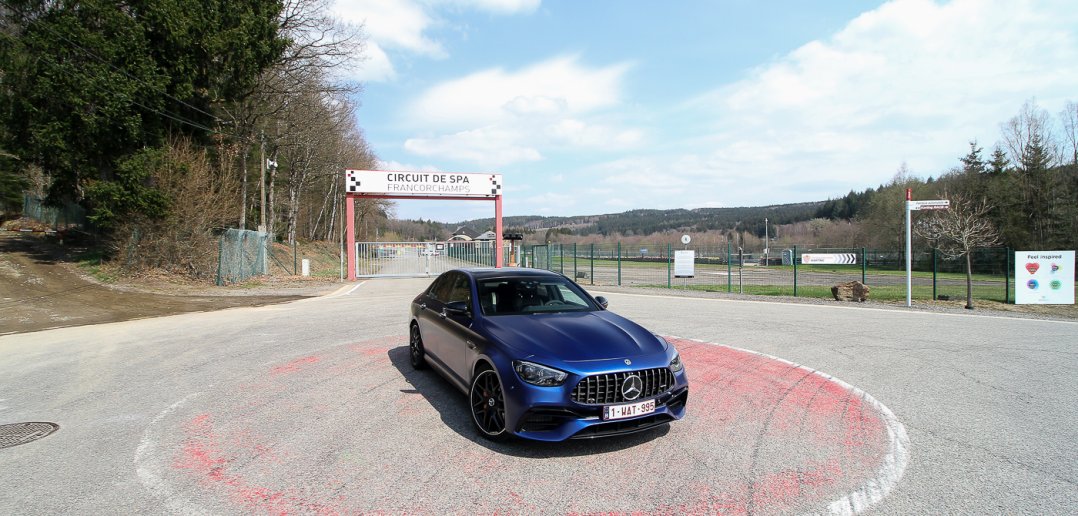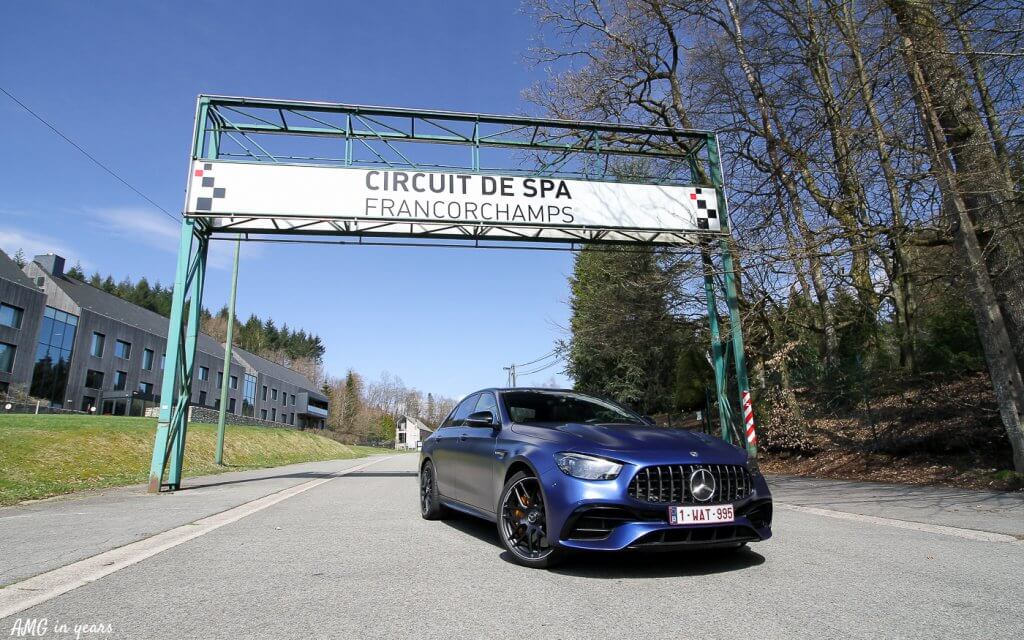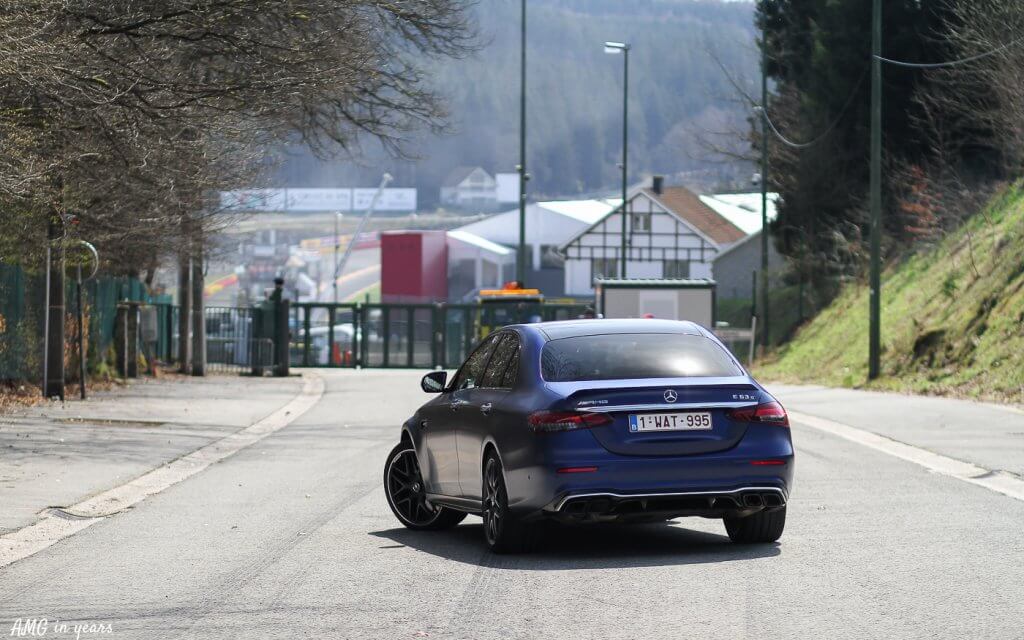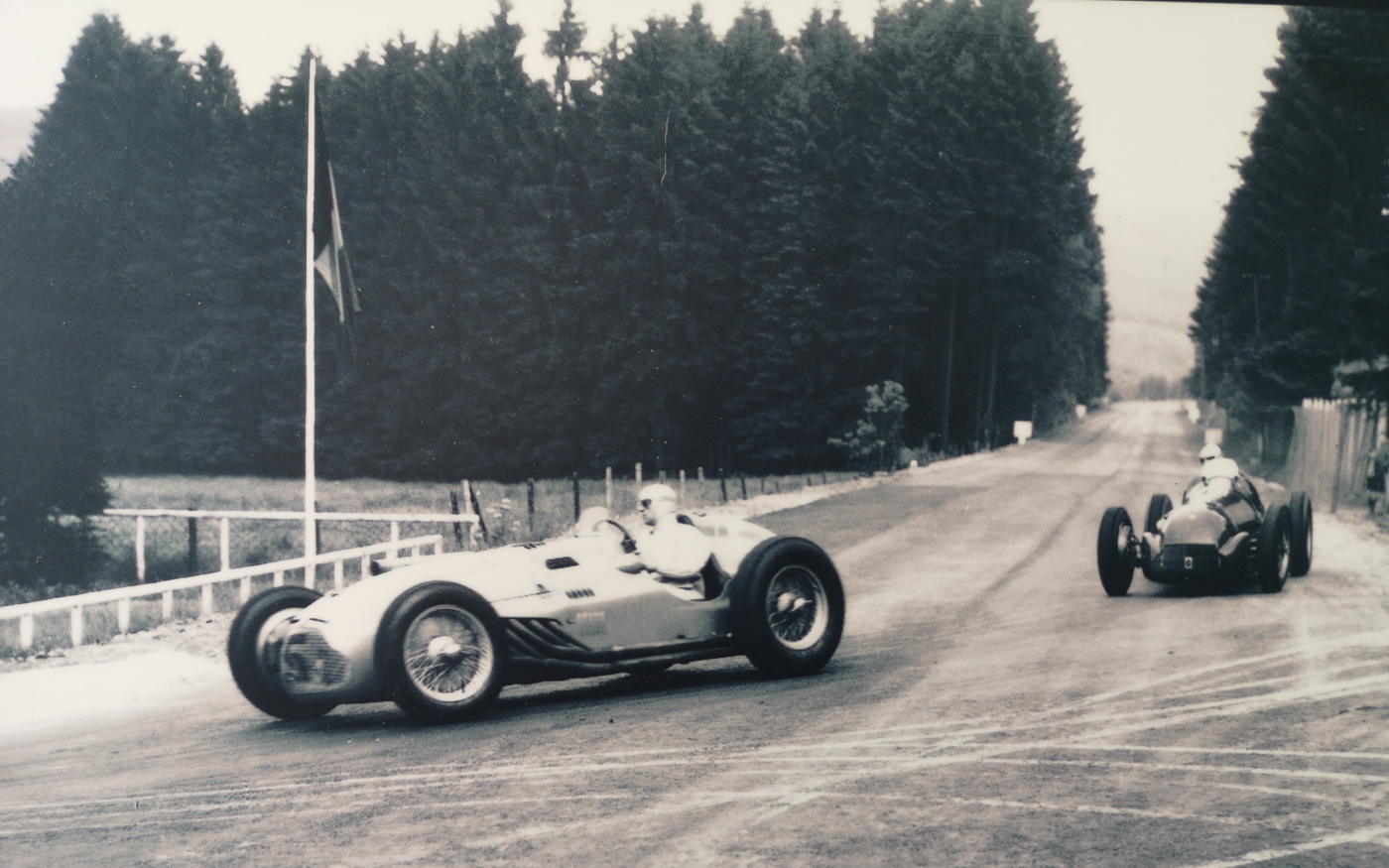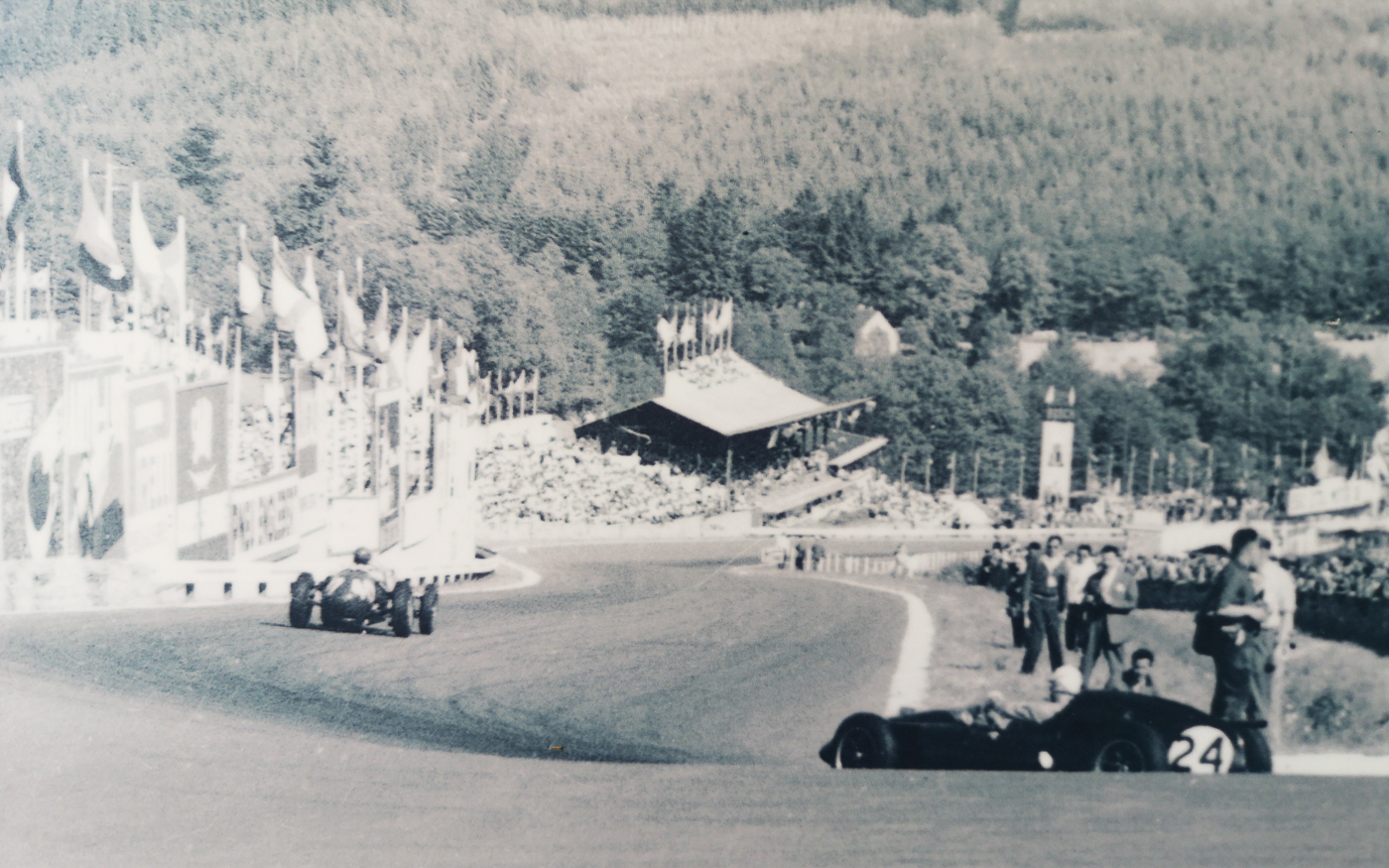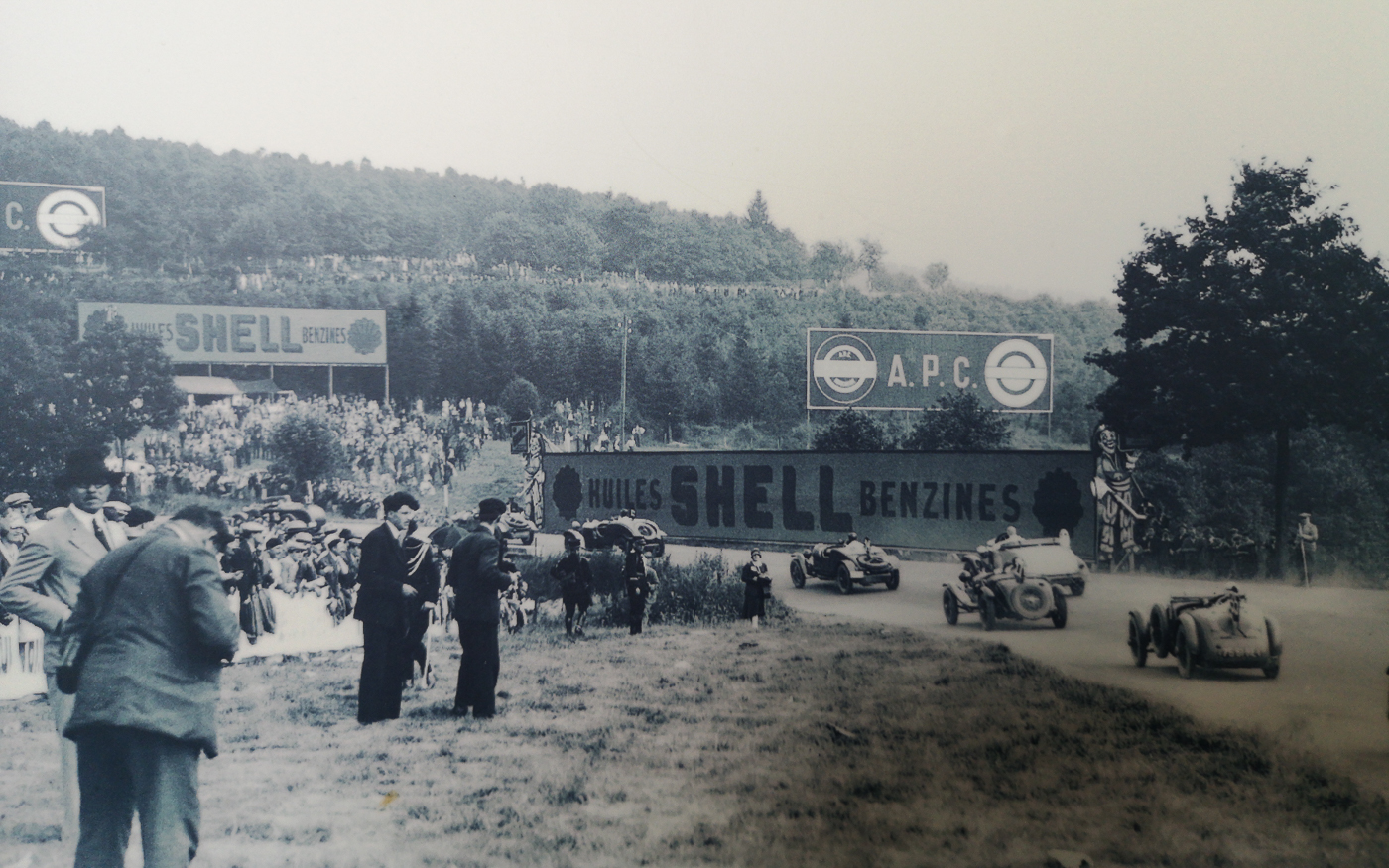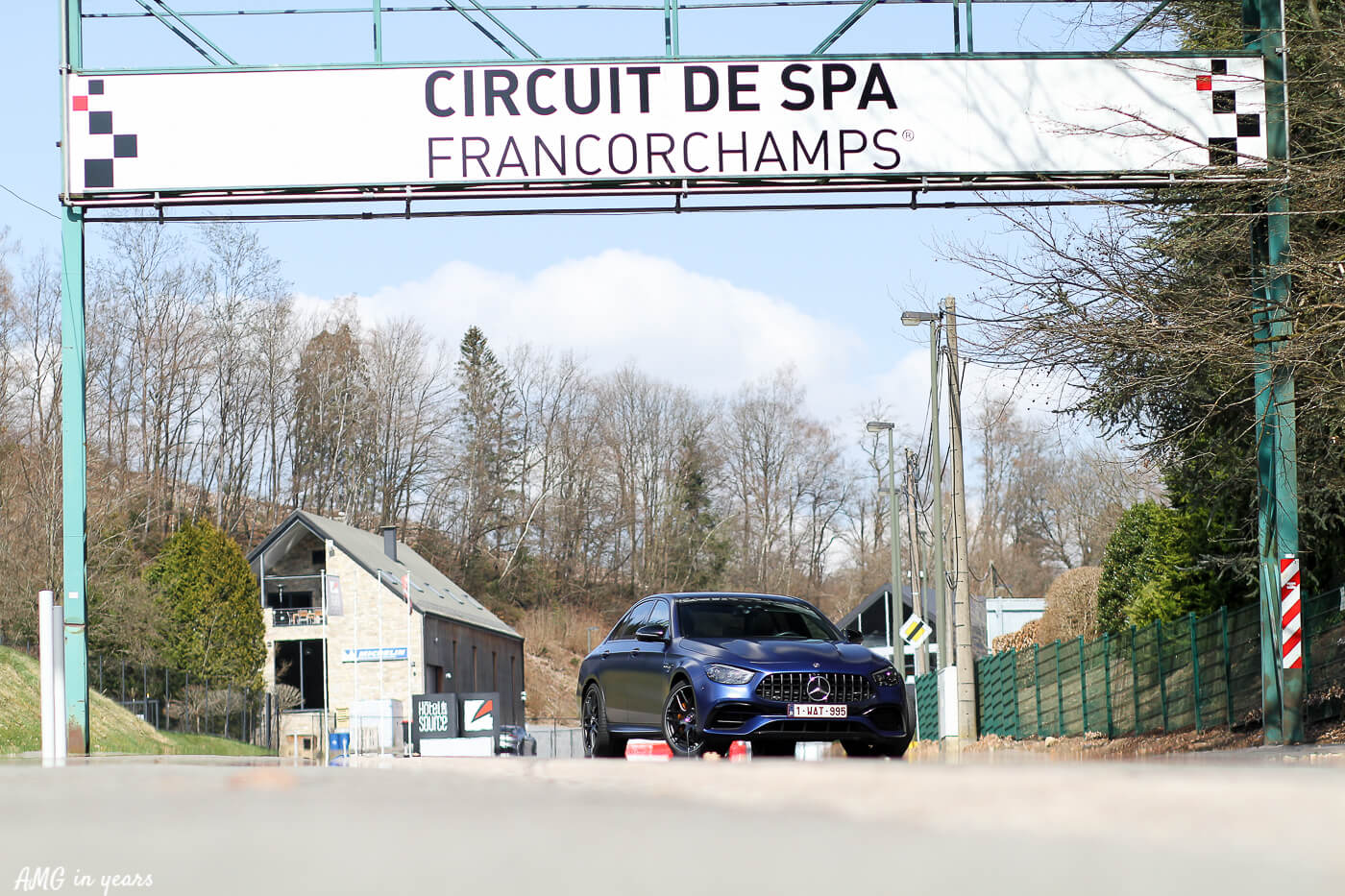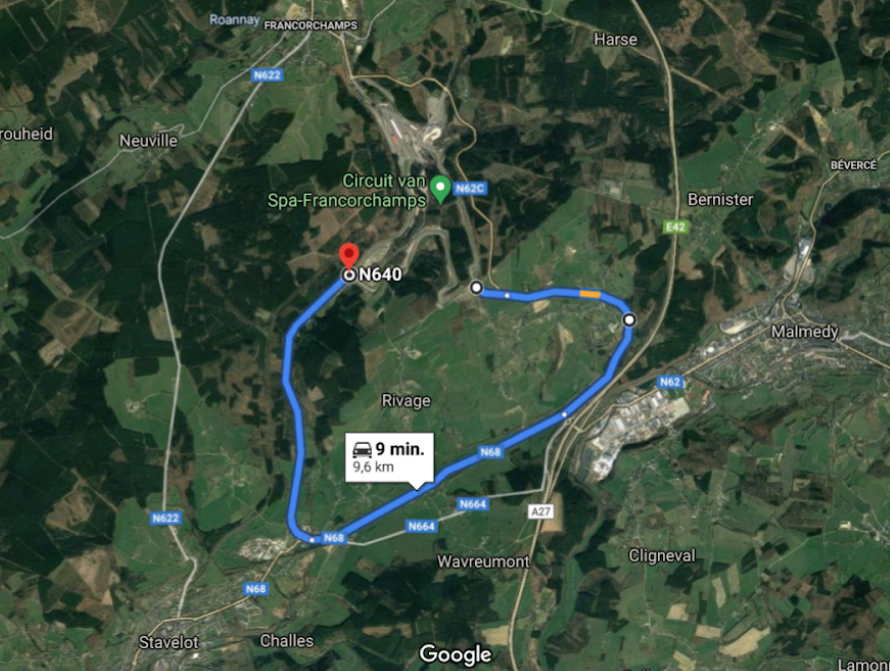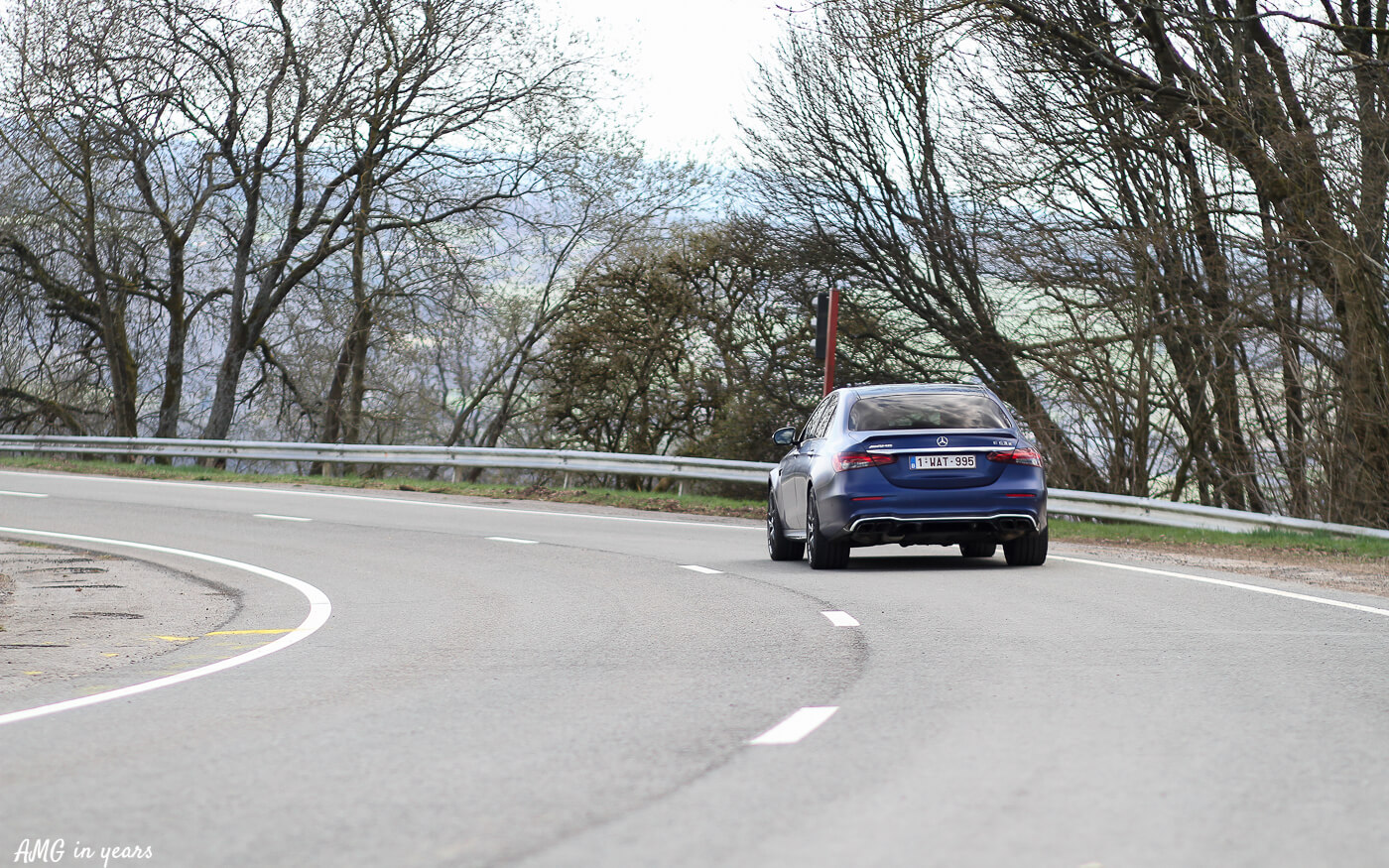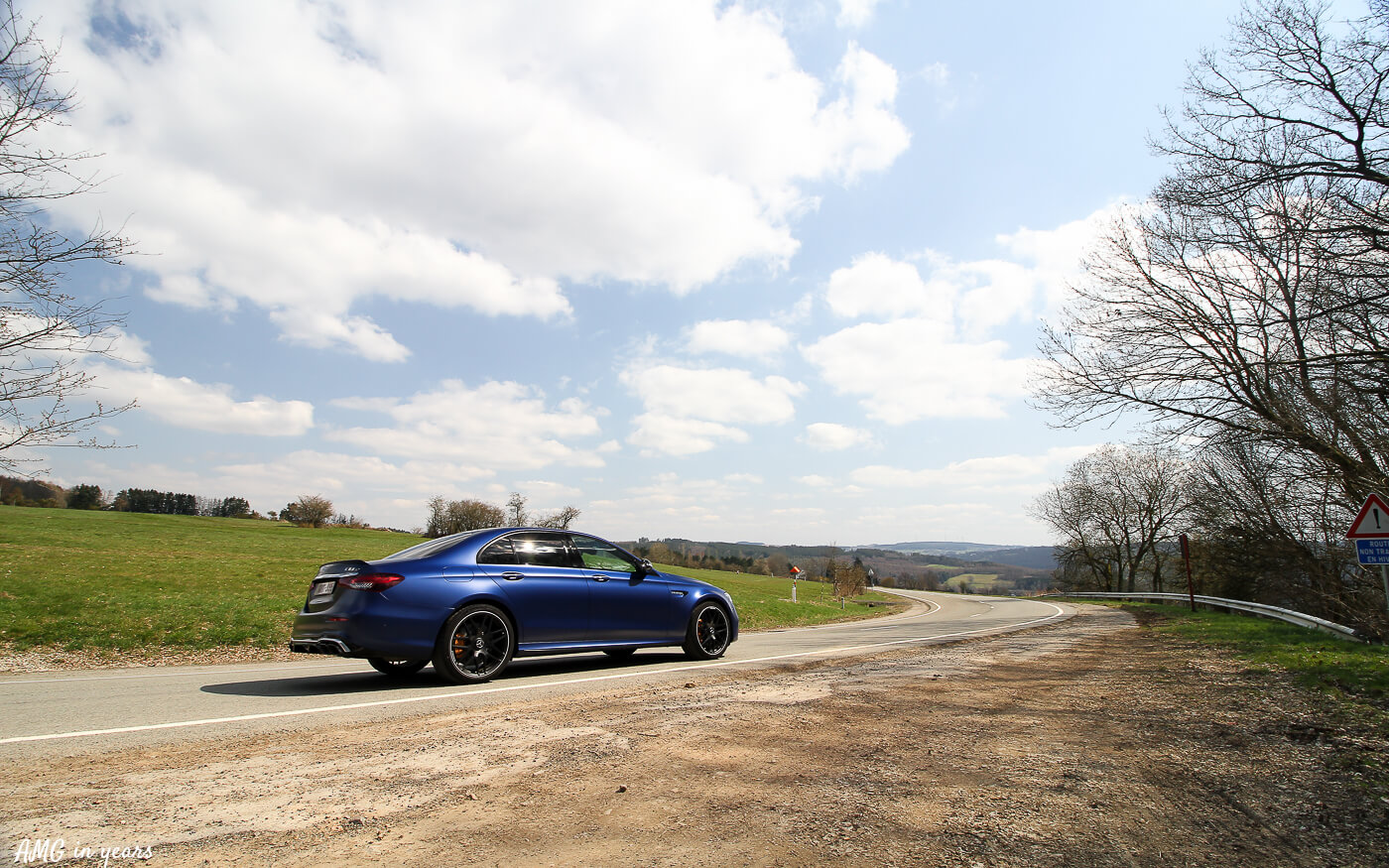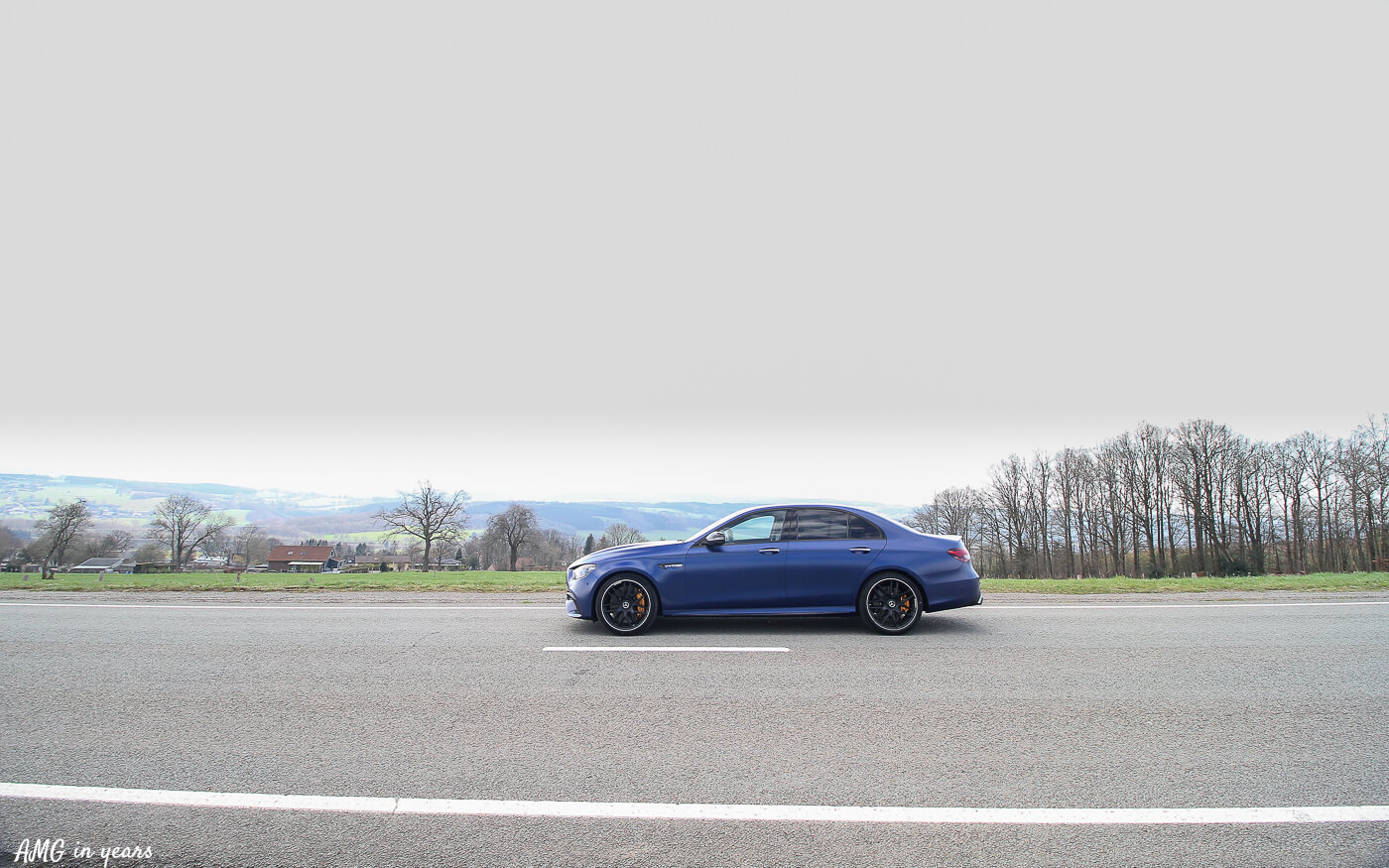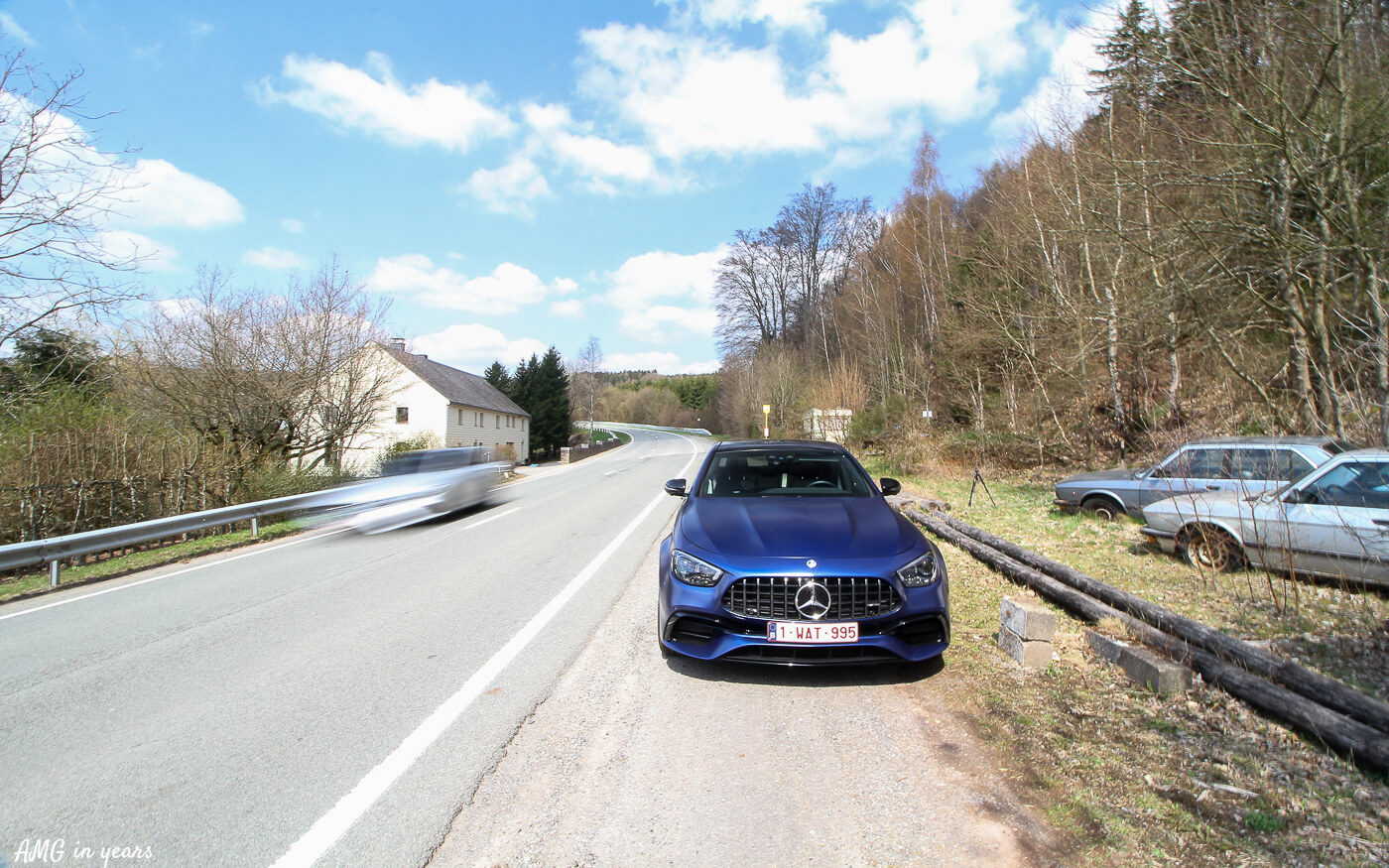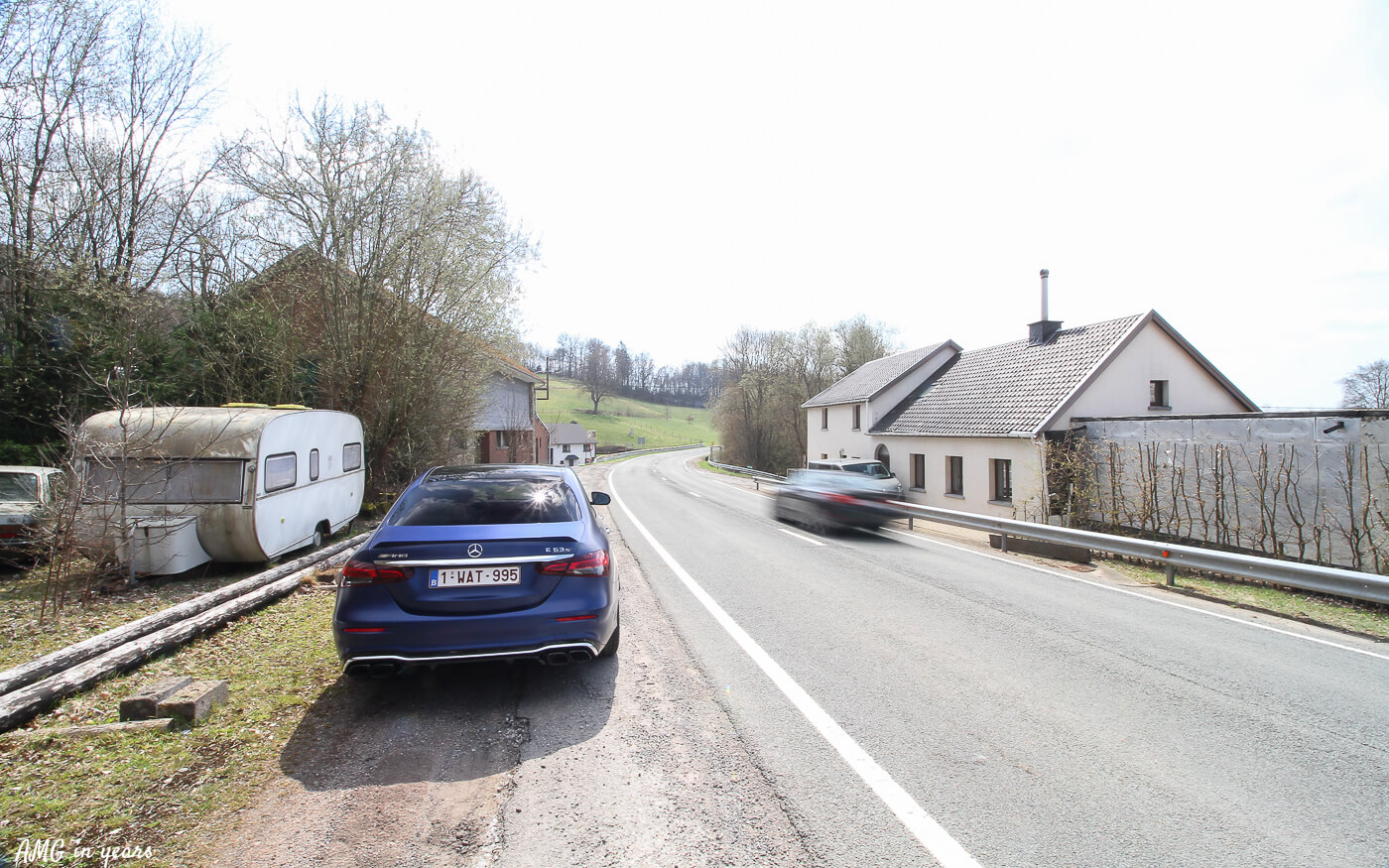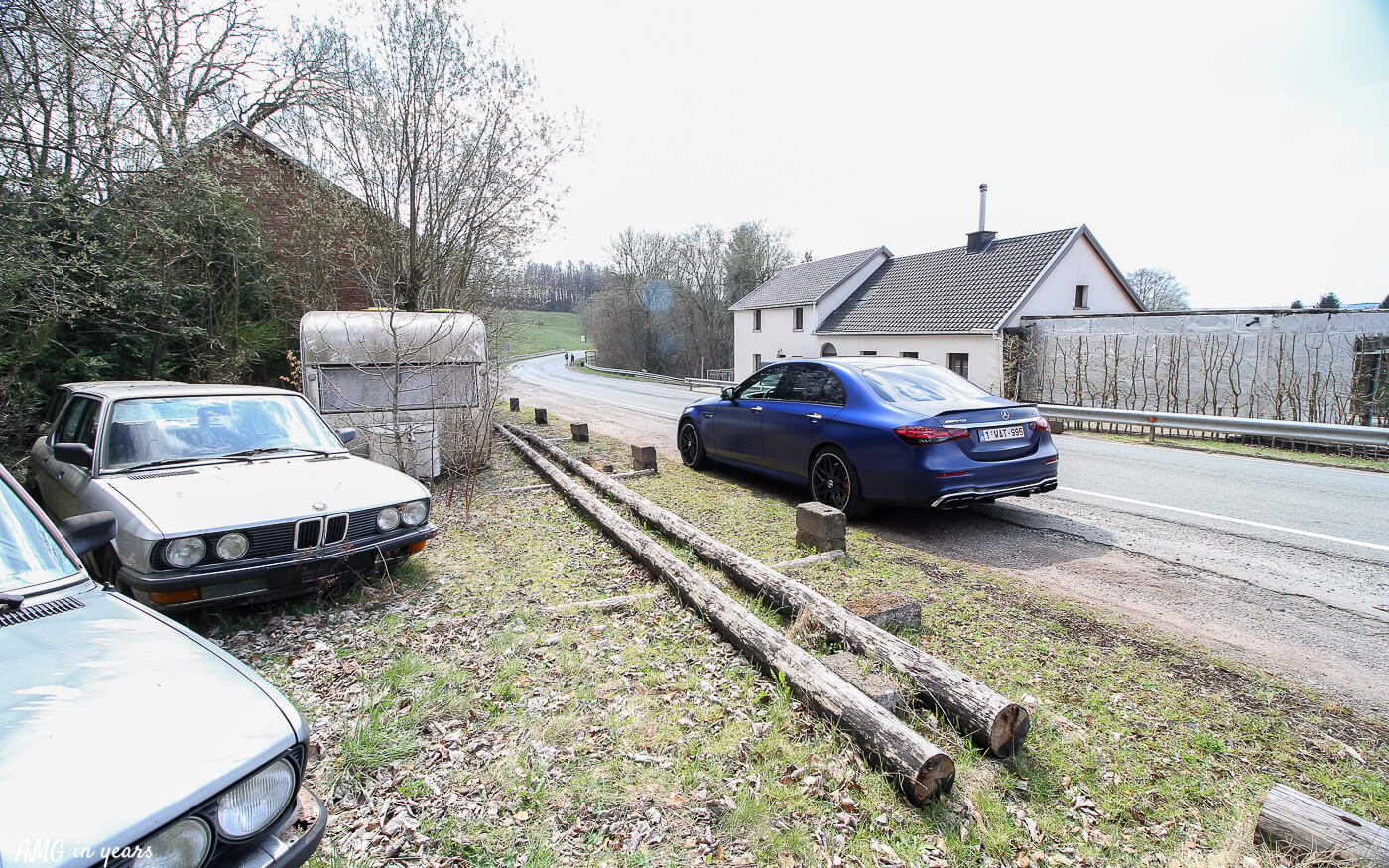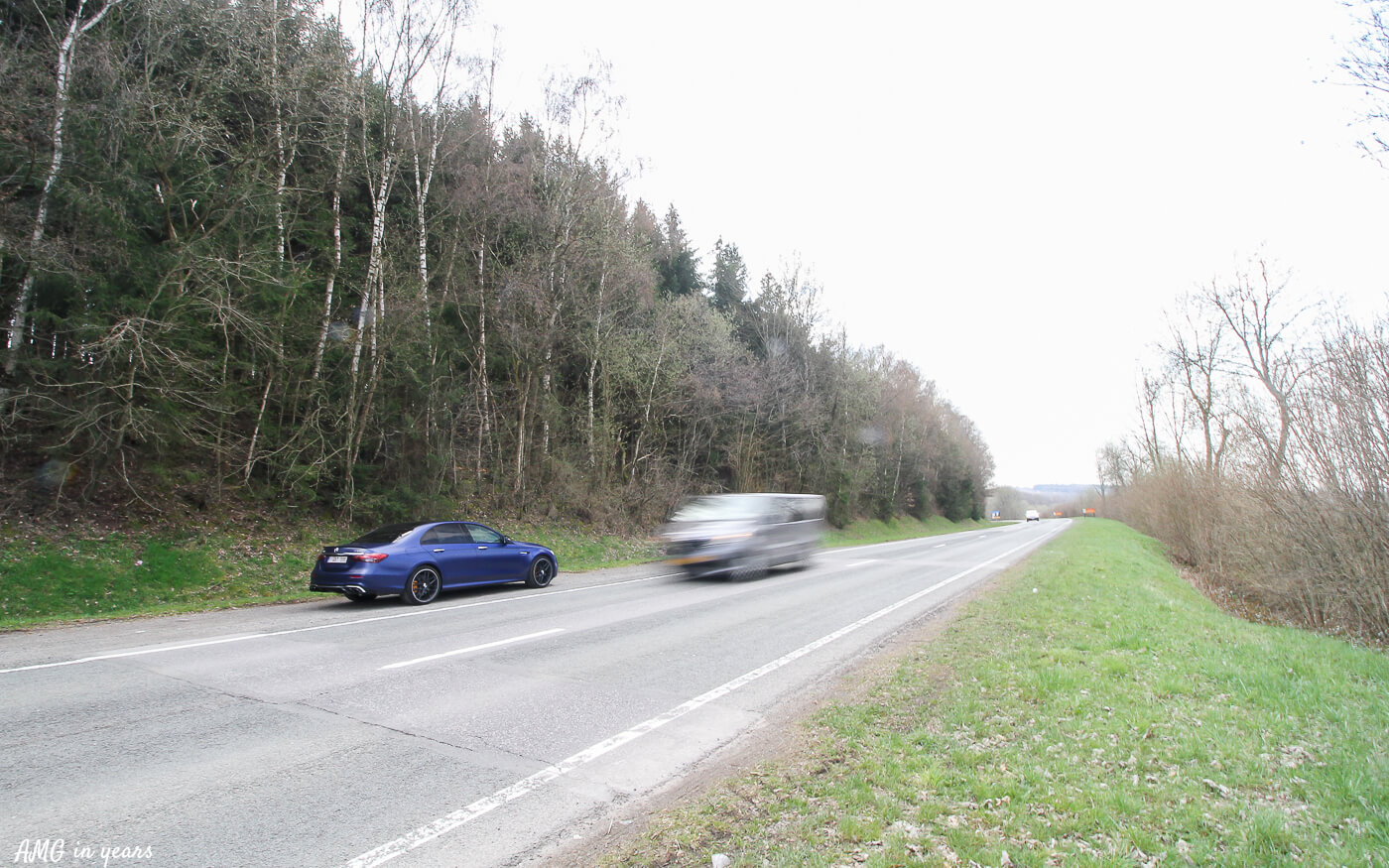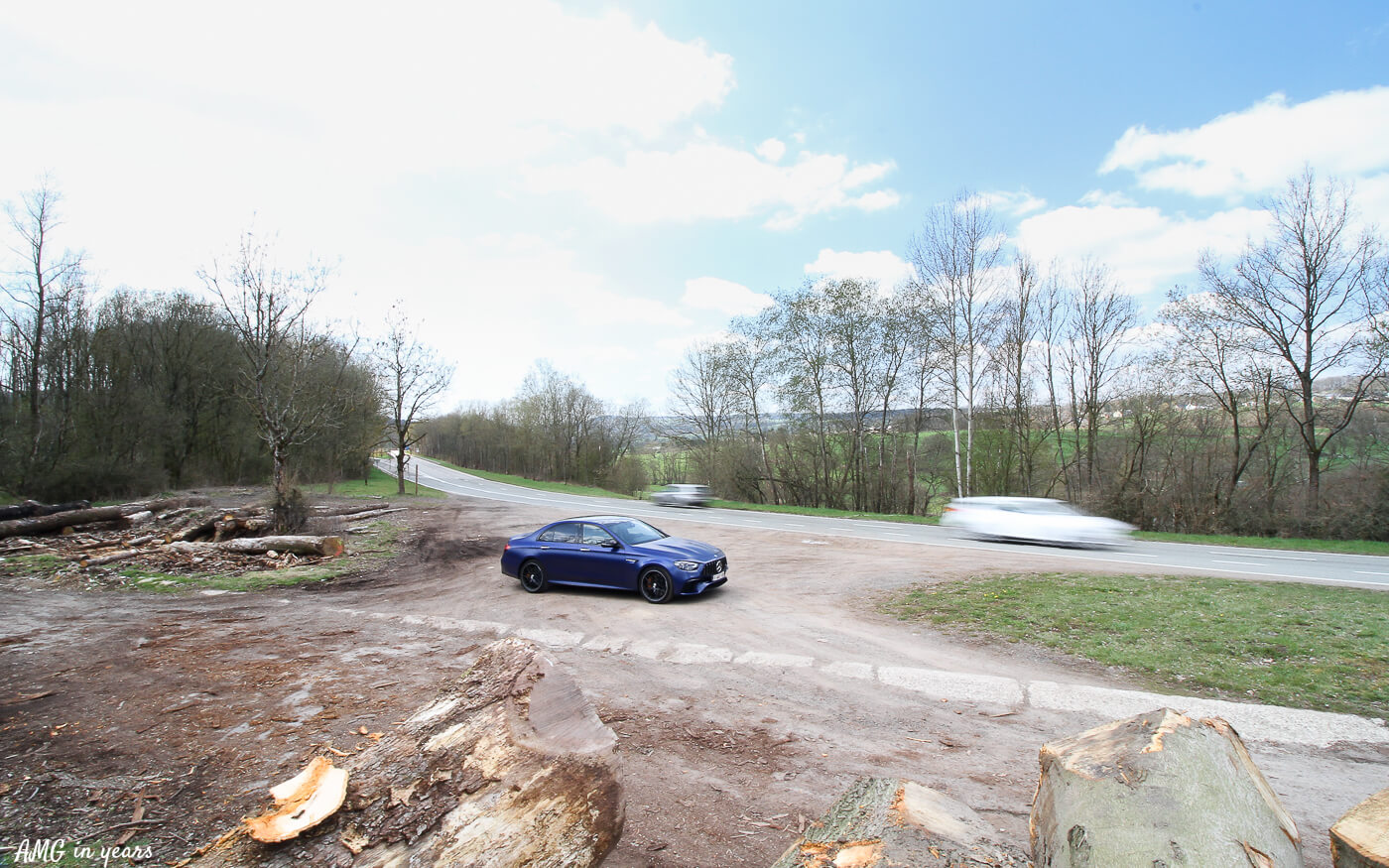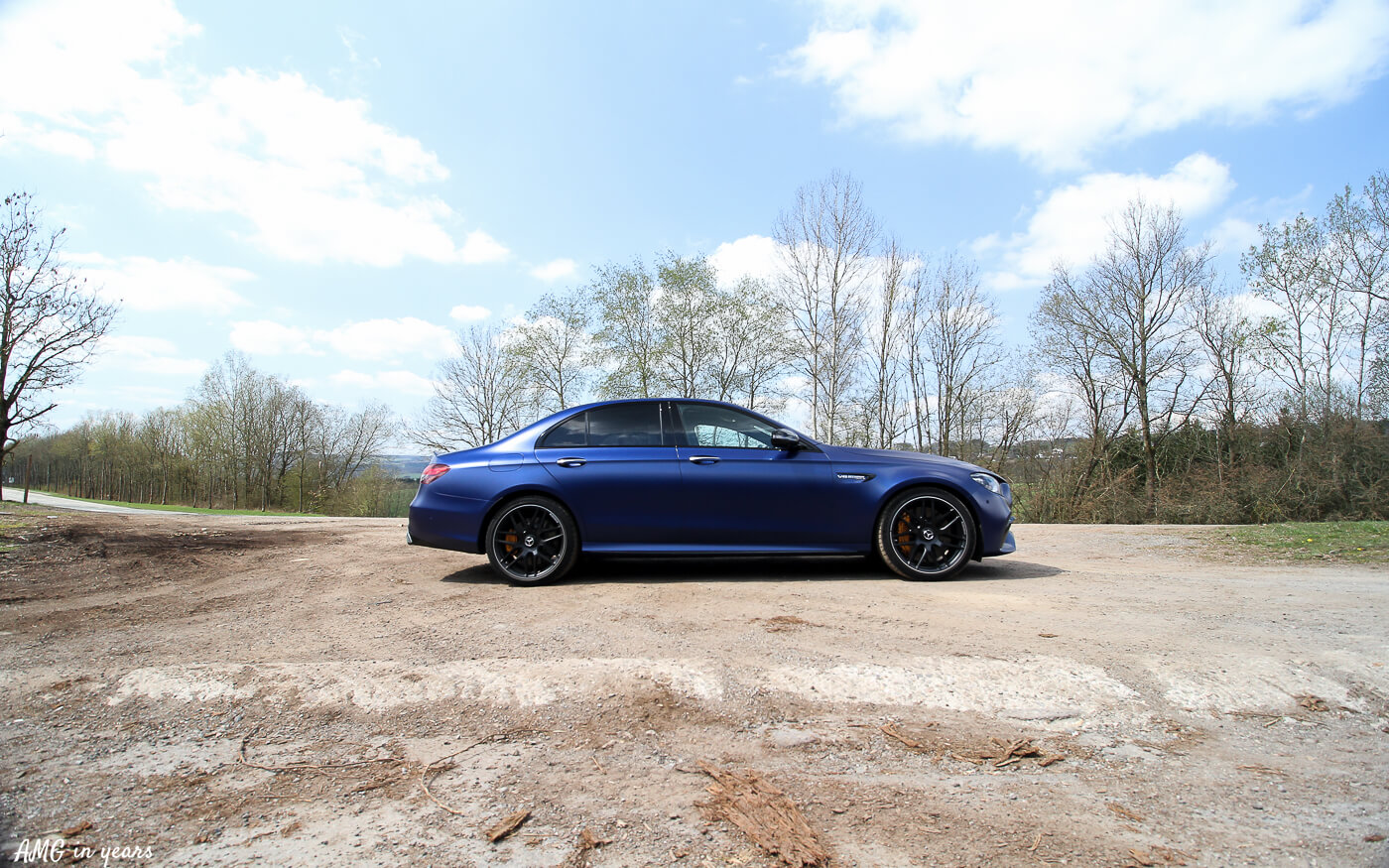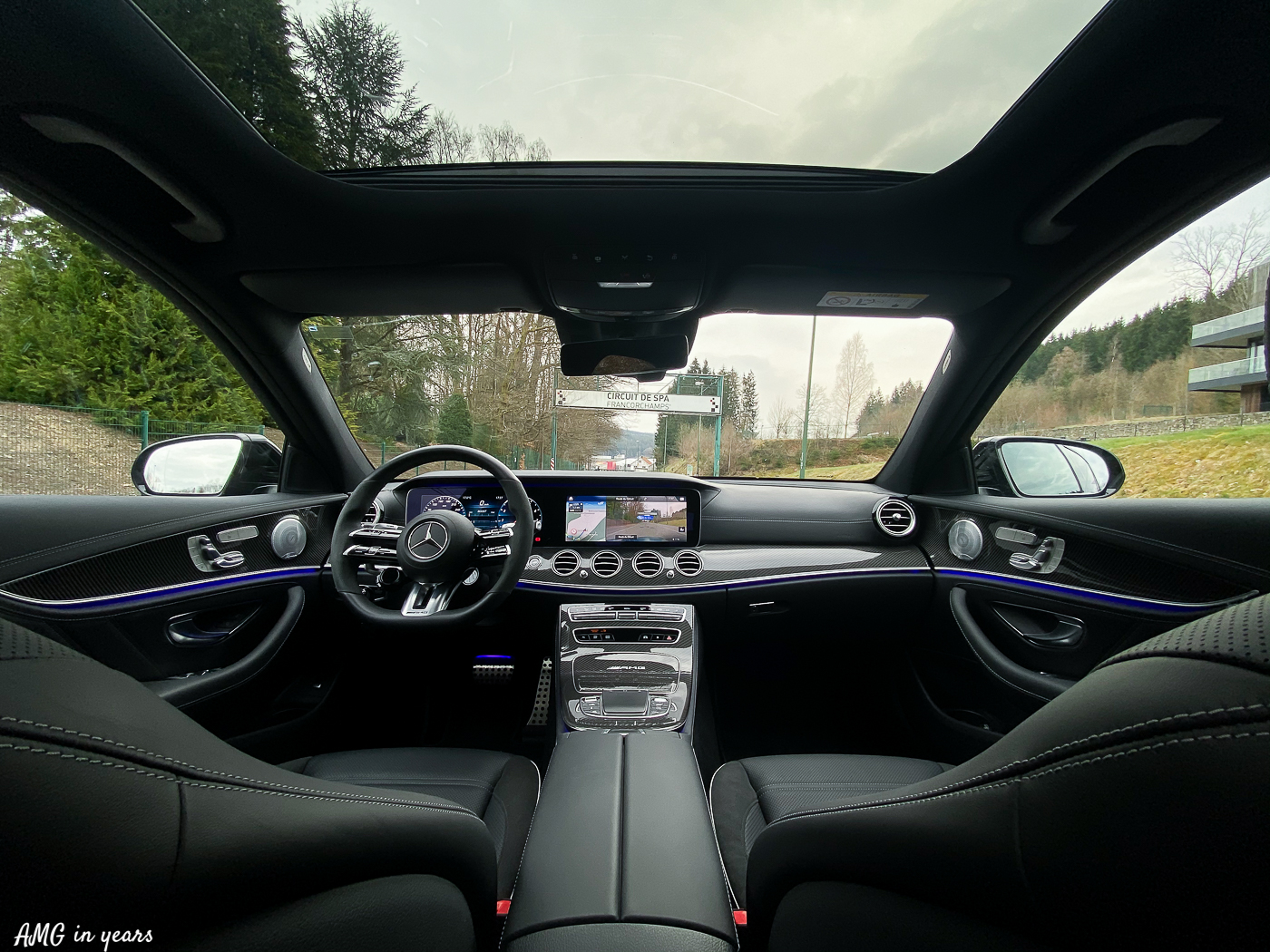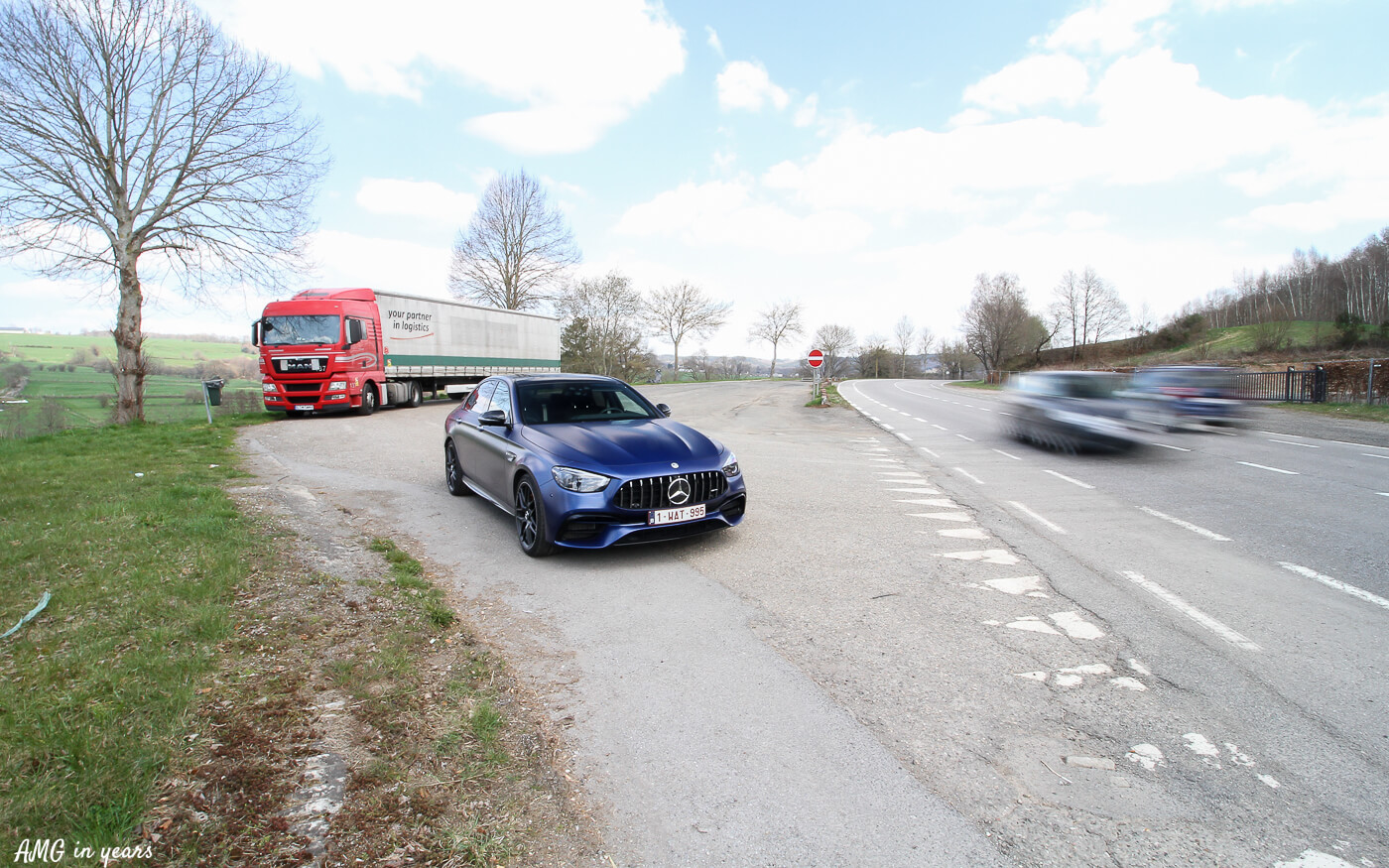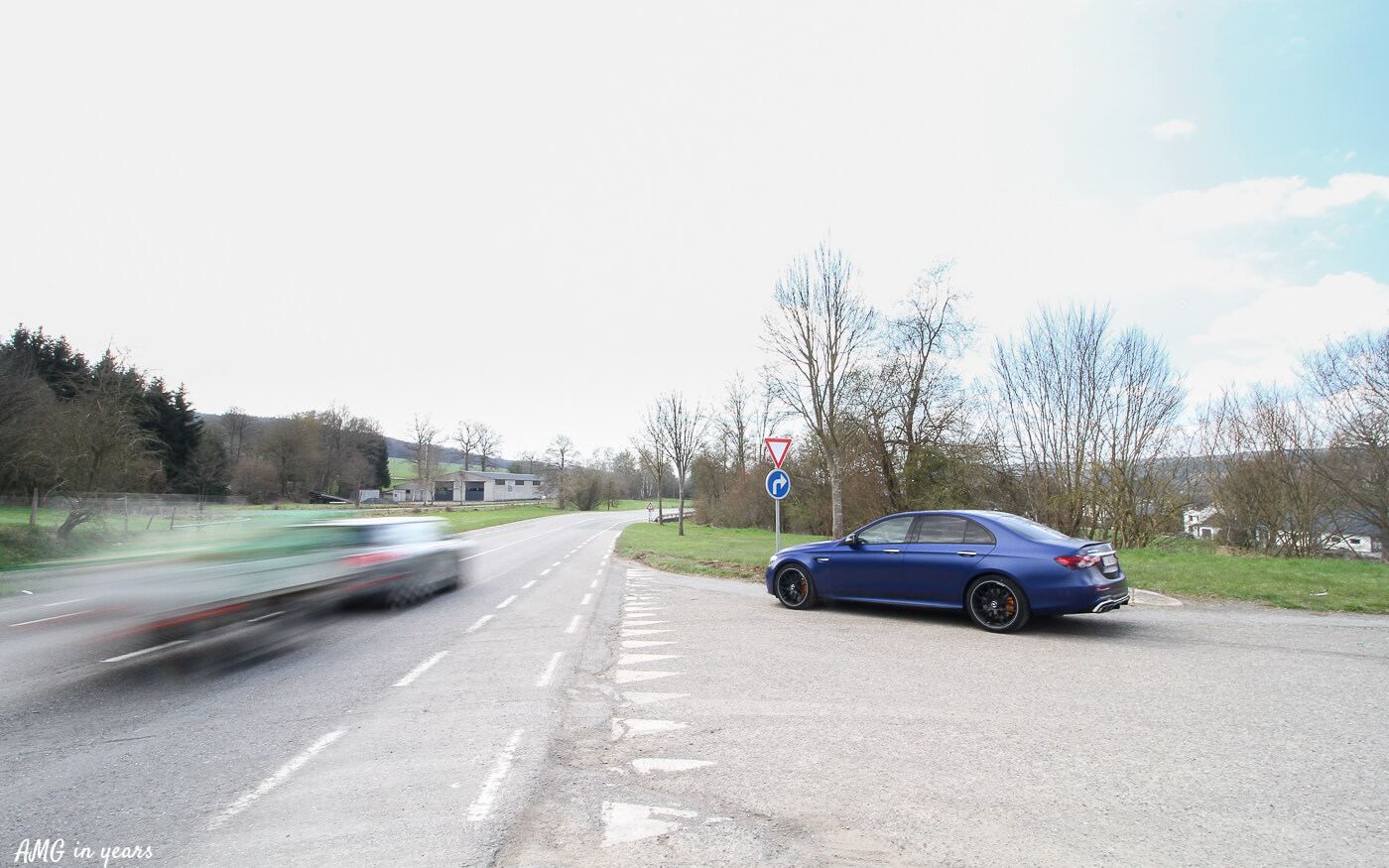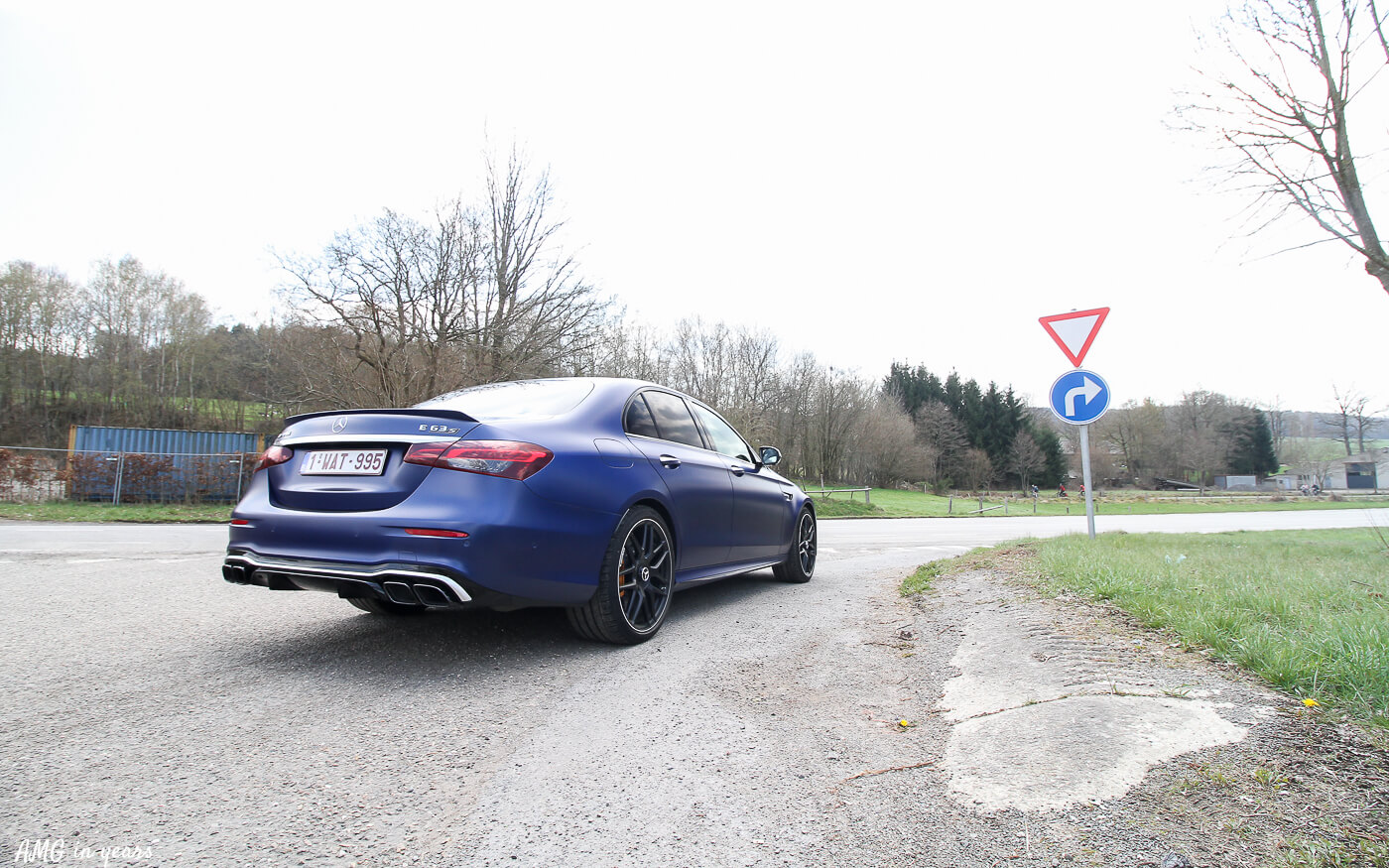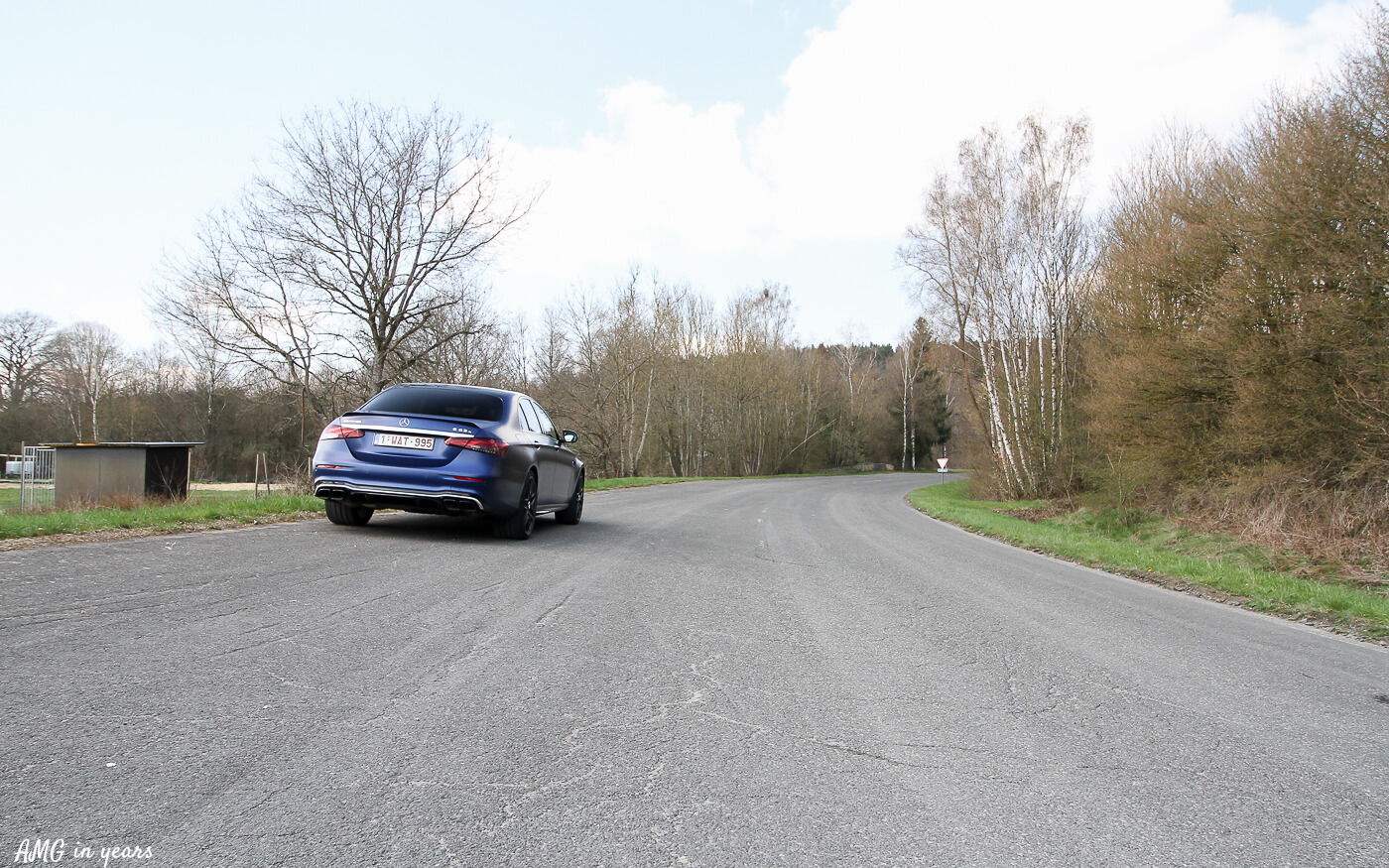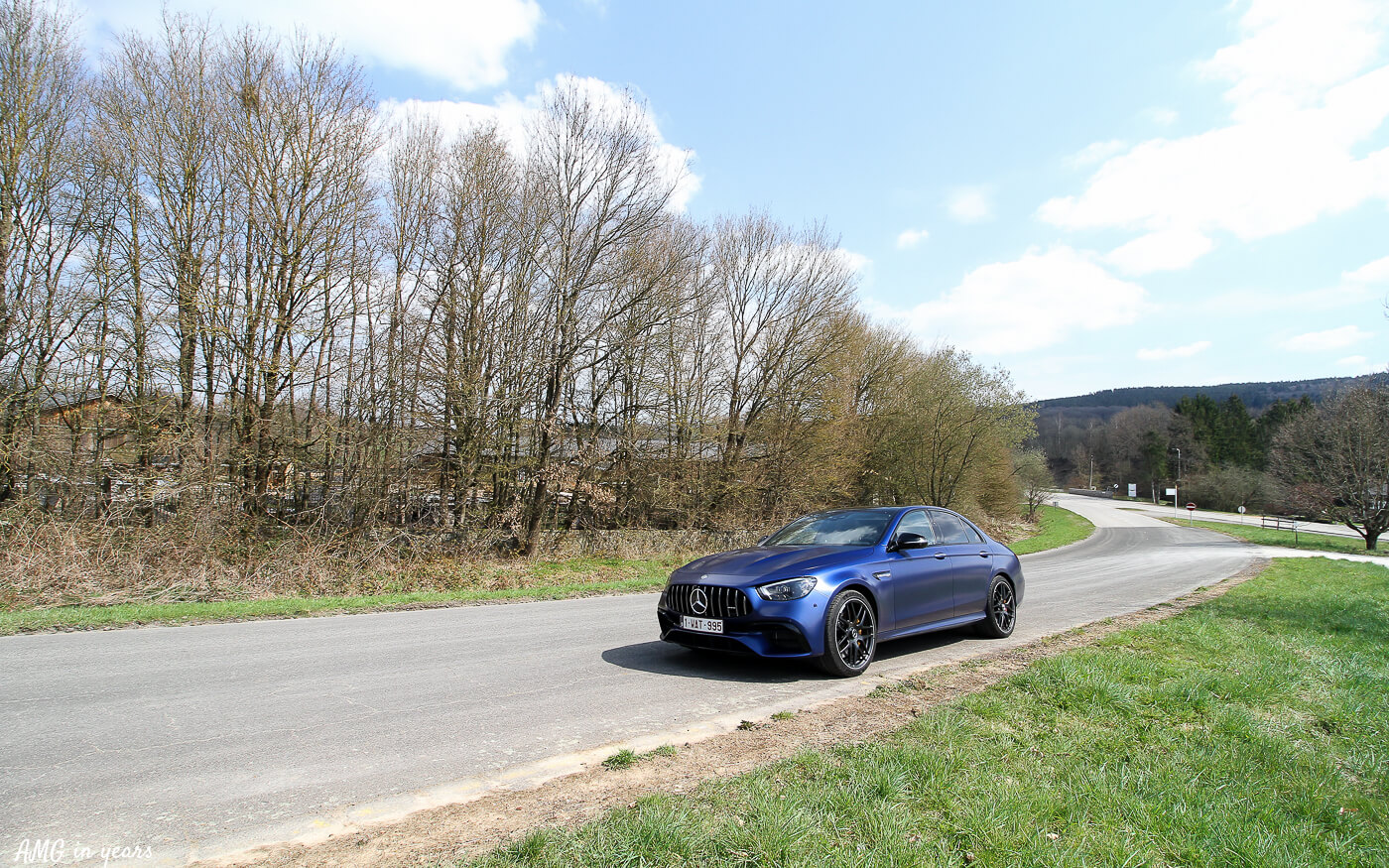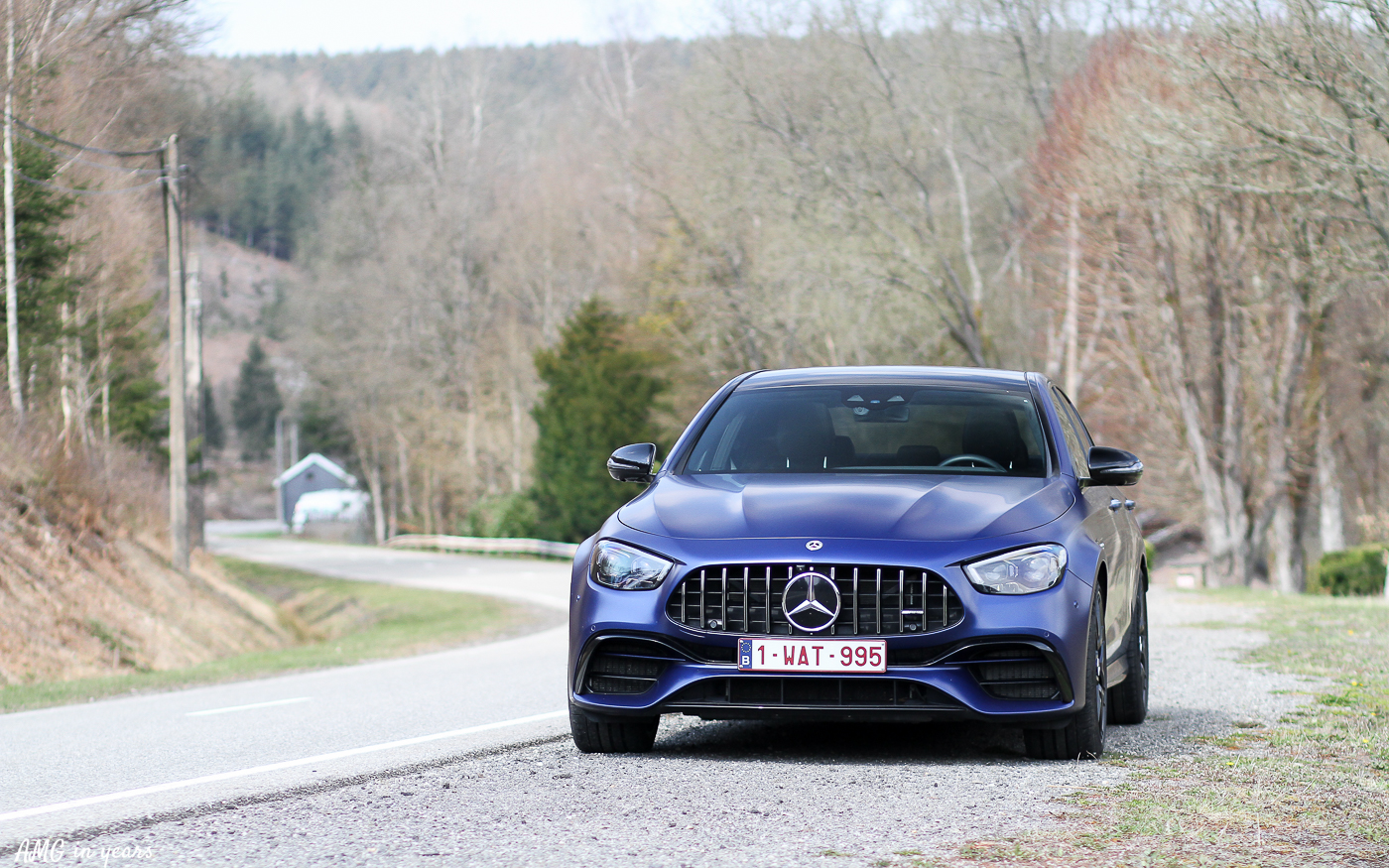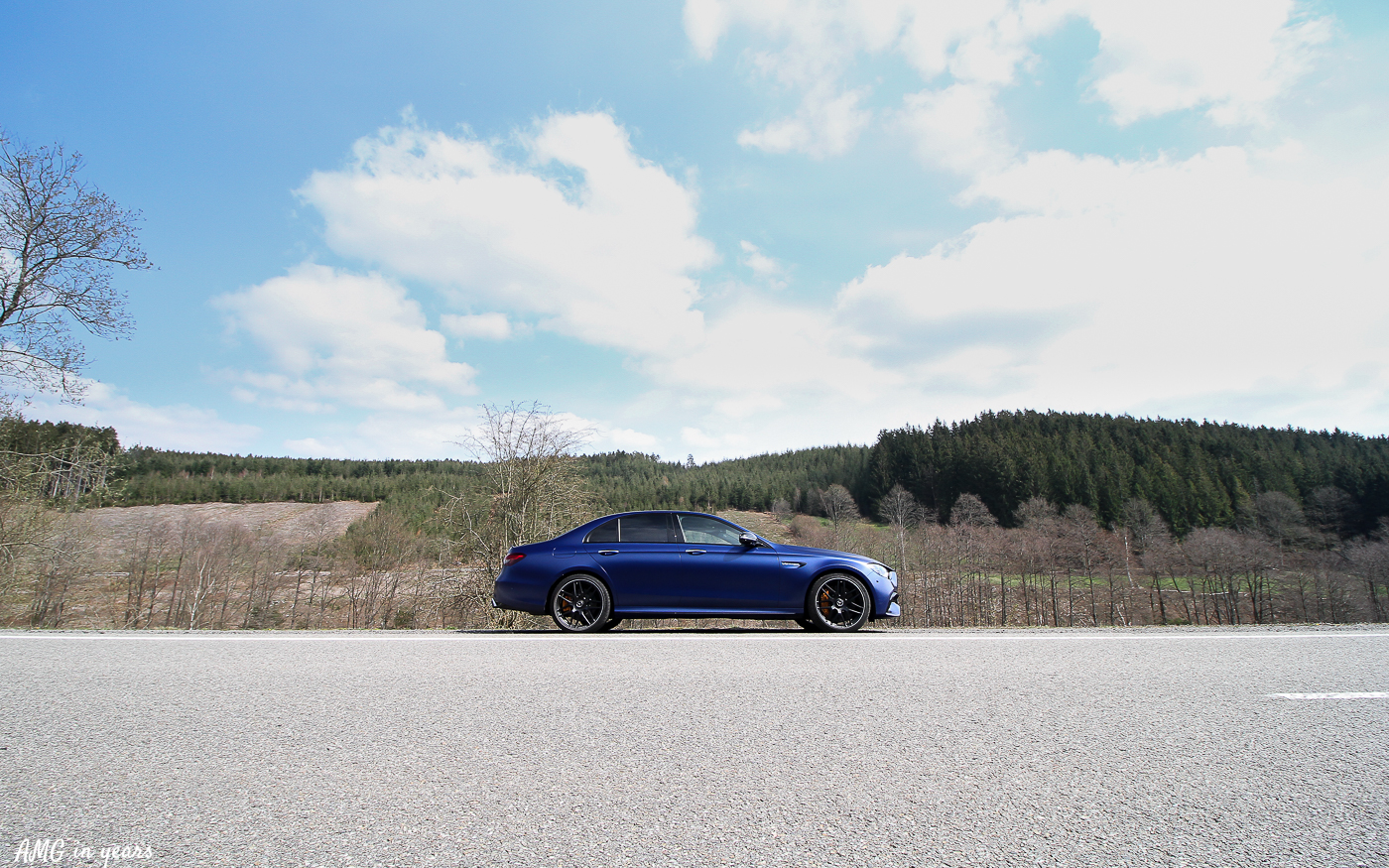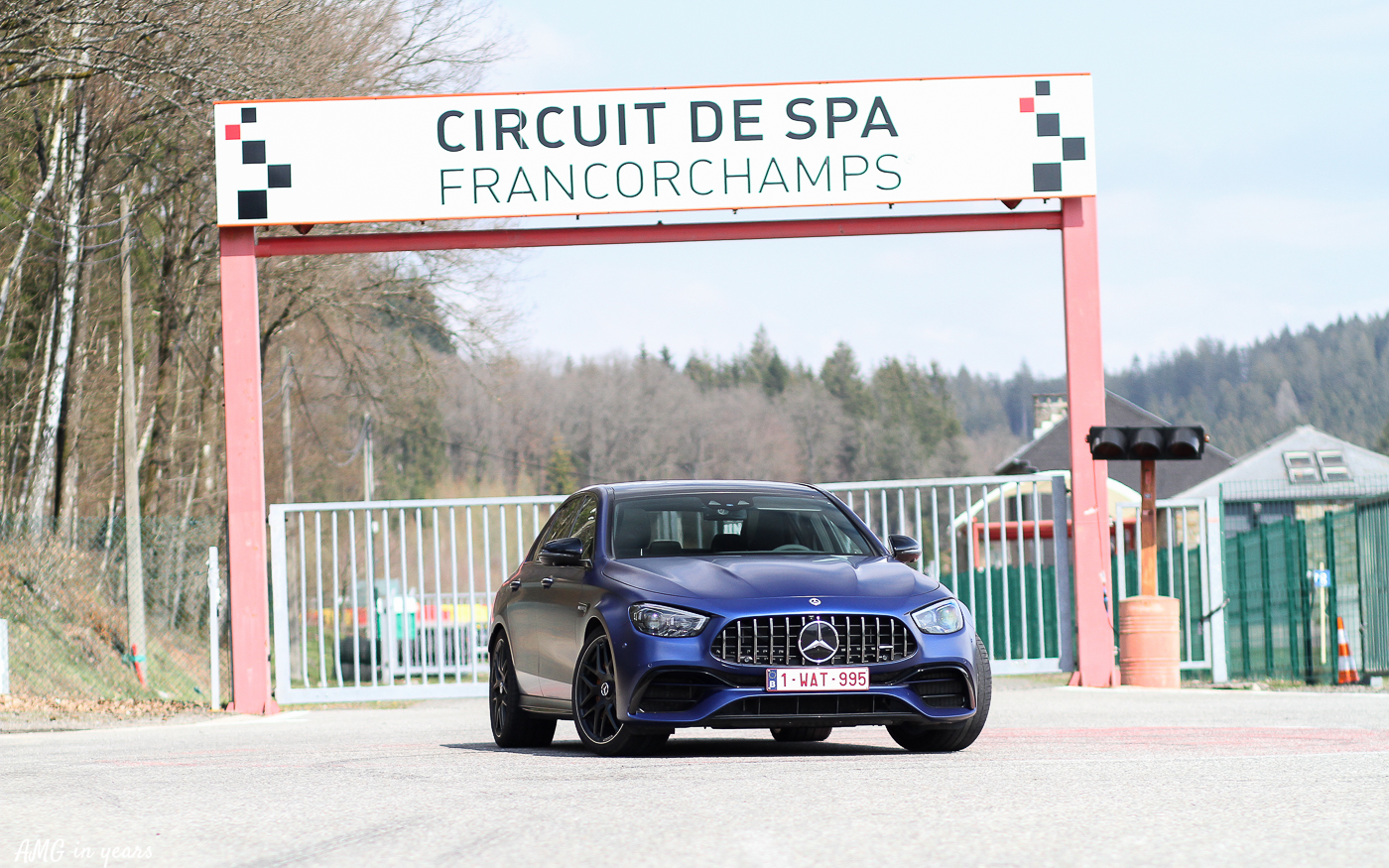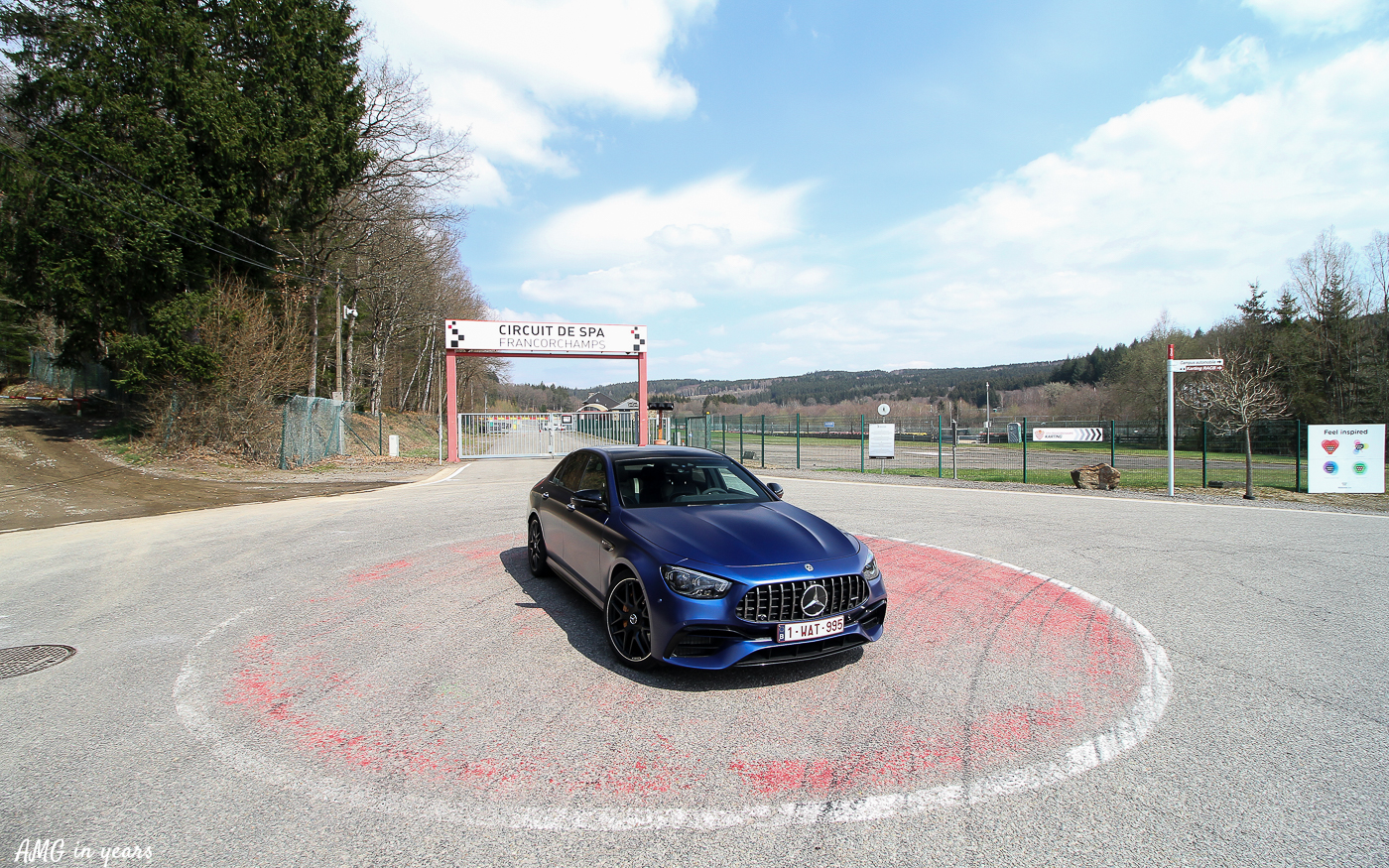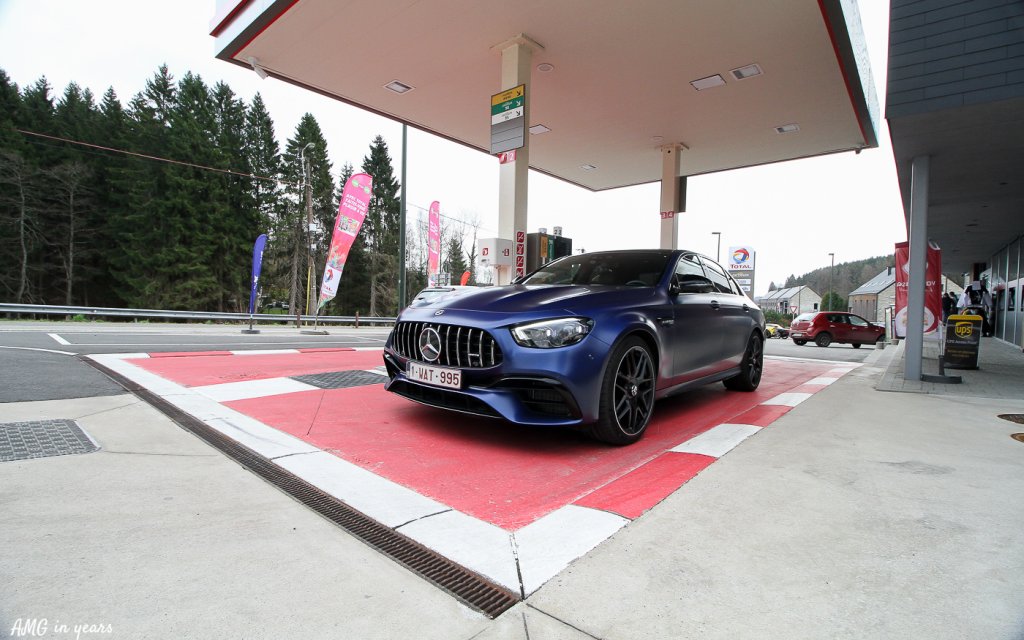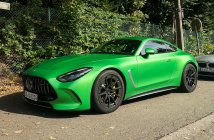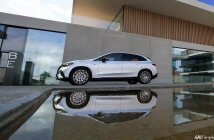Back in 2017, the brand new E 63 S AMG was one of our first testcars we could drive for AMG In Years. Four years later we have the opportunity again thanks to Mercedes-Benz Belgium to drive the facelift of the E 63 S AMG. This time we try to discover the updates of the E 63 S not during a regular testdrive, but while exploring the old Spa-Francorchamps circuit that was and still is public roads.
Due to the fact that the circuit is currently only open behind closed doors, we can only show the route where the current circuit turns into the old circuit and 9,6 km further where the old circuit becomes the current track. The old circuit lay-out we will highlight is the 14 km long traject that was first used in 1921. With 14 km it is double the length of the current circuit layout (7,004 km). Before 1922 the races actually started in the city center of Spa and the trajectory went via Malchamps to Francorchamps city. The lay-out of the circuit was designed in 1920 in ‘Hôtel des Bruyères’ (currently the abandoned ‘Francorchamps Racing Hotel’) by the Mayor of Spa (Joseph de Crawhez), the general director of the Liège newspaper ‘La Meuse’ (Jules de Thier) and the chairman of the sports committee of the belgian automobile club (Henry Langlois). In essence the roads that connected Francorchamps, Malmedy and Stavelot (32, 23 & 440) formed a perfect ‘triangle’ for the circuit. The circuit of Spa-Francorchamps was born.
The first race took place on 12th of August in 1921 for motorbikes on earth roads. It was the intention to organize the race for racecars, but after only 1 registration it was decided to organize the race for motorbikes. The year after the first race took place with racecars on the earth roads. Only in 1928 the circuit was fully asphalted. The circuit was undergoing permanent changes including tribunes and a tower for time measurement. After the second world war the circuit was rebuilt with support from the Belgian government in order to increase safety for the drivers and spectators. The changes allowed to organize a 24 hour race. From 1950 the circuit hosted races for the upper class of motorsports: Formula 1. The year after, the track was widened from 6 to 9 meter.
- Pictures: Museum Spa-Francorchamps
- Pictures: Museum Spa-Francorchamps
From 1979 the circuit was reduced significantly from a lenght of 14 km to around 6,9 km by the introduction of Les Combes and Paul Frère curve. Only since 2003 the circuit of Spa Francorchamps has been a fully dedicated circuit without public roads. Main changes after 2003 is the reshaped bus stop chicane and a redesigned start-finish including brand new grandstand and pit boxes. Last year new investments were announced to replace some of the older infrastructure.
Enough history lessons, right? Let’s start the ride! We start from the circuit entrance at La Source and drive to our starting point close to camping Les Combes. The winding roads in between with impressive height differences are the perfect territory to test the handling of the E 63 S. Despite its size the way the E 63 S sticks to the road is impressive. With an amount of 612 hp the four wheel drive with variable torque comes in handy if your name is not Lewis Hamilton or Max Verstappen. The drift mode is still available but we wouldn’t recommend it on public roads. Furthermore the steering is rasersharp and with a twist of the fingers you can scroll between the different driving modes.
Les Combes
Currently known as a ‘slow’ right left combination, but Les Combes was a fast left corner slightly going down at the point where we leave the current circuit and which is the highest point of the full circuit. This section is also known as ‘Haut de la Cote’. At both sides of the road the area is transformed into an atmospheric camping area during the Belgian GP Formula 1 race weekend. Our designo brilliant blue colored E 63 S 4MATIC+ perfectly fits the beautiful views. It takes some guts to order this stately sedan in this striking color but in combination with the matte black 20 inch rims and the AMG Night Pack the looks are just spot on. However, if you don’t want to be stared at each corner, don’t order this color.
Mercedes went a little further with the E-facelift than the average facelift recipe with a completely redesigned front and back. Personally I’m convinced that the looks of the pre-facelift are a textbook example of timeless design while the new design won’t please everybody. Nevertheless in E 63 S AMG trim the E-Class remains sexy enough to make your neighbours jealous. Despite that, the visual difference with the E 53 AMG is not as pronounced as the previous model.
Burnenville
After a long descent of more than one km we arrive at Burnenville corner. A very fast but challenging right corner. The house on the right side just next to the ‘track’ is a good visual landmark of the famous corner that is named after the small village around the corner. On the opposite side you will find several abandoned BMWs and caravans, a very unique sight.
If we zoom in to the history of Mercedes at the circuit of Spa Francorchamps, below are the Mercedes-Benz successes at the Ardennes circuit as constructor wins:
- 24h of Spa: 1931 (Mercedes-Benz SSK), 1964 (Mercedes-Benz 300 SE) & 2013 (Mercedes-Benz SLS AMG GT3)
- Belgian Grand Prix: 1935 (Rudolf Caracciola), 1939 (Hermann Lang), 1955 (Juan Manuel Fangio), 2015, 2016, 2017 & 2020 (Lewis Hamilton)
Not a very long list, but more important for AMG was the overall 2nd place of the Mercedes-Benz SEL 6.8 Rote Sau at the 24hours of Spa in 1971, which is probably the defining moment that AMG exists today.
Malmedy & Old Chicane
Back on track again. Not far after Burnenville there is the Malmedy left right combination which was cut by a chicane and used before World War 2, but also during the seventies. There is still a clear visual track of the chicane, but it looks more like a threshold rather than a curbstone. This deserted place next to the track allows us to take a close look at the updated interior. At first sight you would say nothing has been updated but the IWC watch disappeared unfortunately. One of the few things we can notice is the new design of the paddles for the gearbox behind the steering wheel and the touchpad to control the infotainment system. The E 63 S can now also count on the latest generation of the MBUX user interface which is smarter than ever before. Also new is the AMG Supersport steering wheel which also includes the AMG setting buttons and rotary knob to select the driving mode.
Masta Kink
After the old chicane, there is a long straight of 2 km that brings us to the Masta kink, one of the most famous and challenging S-corners. In an attempt to make that part of the circuit a bit safer, the idea was to introduce a chicane just before . One of the curbstones is still there, but since the introduction in 1975 it was never used. The area next to the chicane is now used as rest stop for trucks.
The sound must have been incredible on this lengthy straight line. Speaking about sound, it is clear that the facelift E-Class lost some of its AMG sound. What is worrying more is that AMG is pomping some fake noise through the speakers. Once it is in your head it is difficult to disconnect the thought. The car is also isolated so profoundly that in Comfort driving mode there is no engine sound at all under normal load (except if you touch the throttle decently).
Holowell & Stavelot
After another decent straight line we arrive at the Holowell right corner that turns into the Stavelot corner which is curved as if you were driving on the carousel on the Nordschleife. The Stavelot corner is a one-way street so you don’t need to worry about upcoming traffic. The Stavelot turn was only introduced in 1947 to make the circuit even faster. Before 1947 the circuit followed the trajectory of what is still the current T-intersection. Just before the Stavelot corner you cross the small river ‘Eau Rouge’. It is a tributary of the Amblève and starts in Hautes Fagnes and ends near Challes. The circuit crosses a second time the Eau Rouge stream between La Source and the Raidillon. The stream thanks its name due to the red colored water due to the presence of iron oxide deposits.
Carrière
After the Stavelot corner the route is heading back to the current circuit via the fast kinks of Carrière. After another section of 2 km full throttle you literally bump into the current circuit. You cannot miss the large sign of the circuit of Spa-Francorchamps. The exact place where the old circuit turns into the current circuit is just before the position of the current karting circuit. The section is followed by the Blanchimont full throttle left corner and after the Bus Stop chicane the start/finish straight is reached.
This ends our small drive of 9,6 km on the old circuit. Spa-Francorchamps is for many drivers and fans one of the most beautiful circuits of the world. I couldn’t agree more with that and it is definitely something that we need to preserve for the future. Many people won’t have the possibility to race on the current circuit, but as demonstrated above, the existing roads provide a possibility to go back in time without realizing. Just don’t use it as a race circuit, there are enough trackdays available, even in corona times. If you want to learn more on the history of the circuit, we can recommend you to visit the museum in Stavelot dedicated to the circuit of Spa Francorchamps in the old Abbey.
The past is always with us
We end with the E 63 S 4MATIC+. It is the perfect embodiment of the old AMG philosophy with the combination of comfort, space and performance. But is it as exciting as the E 63 S we drove back in 2017? Probably not but that is due to new regulations and not due to the art AMG is mastering. The E-Class remains an example of solidity in every single detail. The experience doesn’t disapoints.

